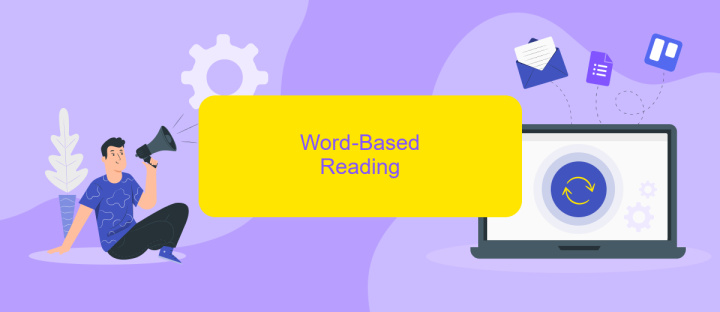What is The Slowest Method of Reading Text in UiPath
In the realm of robotic process automation, UiPath offers various methods for reading text, each with its own speed and efficiency. Among these, some methods stand out for their slower performance due to specific technical limitations. This article delves into identifying the slowest method of reading text in UiPath, examining the factors that contribute to its reduced speed and potential impact on automation workflows.
Introduction
In the realm of robotic process automation (RPA), UiPath stands out as a leading platform for automating repetitive tasks. However, when it comes to reading text, not all methods are created equal. The speed of text reading can significantly impact the efficiency of your automation processes. Understanding the slowest method of reading text in UiPath is crucial for optimizing your workflows and ensuring timely task completion.
- OCR (Optical Character Recognition)
- Screen Scraping
- Native Text Extraction
Each method has its own set of advantages and limitations, but OCR is often cited as the slowest due to its dependency on image quality and processing power. For businesses looking to streamline their automation, integrating services like ApiX-Drive can offer a seamless solution for managing data and improving overall efficiency. By leveraging ApiX-Drive, you can automate data transfer between various applications, thereby reducing the reliance on slower text reading methods and enhancing your RPA capabilities.
Character-Based Reading

Character-based reading in UiPath involves processing text one character at a time. This method can be significantly slower compared to other techniques due to the granularity of the operation. Each character is read, analyzed, and processed individually, which can be time-consuming, especially for large volumes of text. This approach is often used when precise control over each character is necessary, such as in cases of pattern recognition or data validation tasks.
For integrations requiring character-based reading, tools like ApiX-Drive can be invaluable. ApiX-Drive facilitates seamless integration with various services, allowing for efficient data transfer and management. By leveraging ApiX-Drive, you can automate the reading and processing of text data from multiple sources, ensuring that even character-level details are accurately handled. This integration can significantly enhance the efficiency of your UiPath workflows, making character-based reading a more viable option despite its inherent slowness.
Word-Based Reading

Word-based reading in UiPath involves processing text one word at a time, which can be significantly slower compared to other methods. This approach is often necessary when dealing with complex text extraction tasks or when precise word-level analysis is required. It is particularly useful in scenarios where the text is unstructured, and each word needs to be evaluated individually.
- Initialize the UiPath workflow and load the text document.
- Use the "Read Text" activity to extract the entire content.
- Split the text into words using the "Split" function with a space delimiter.
- Iterate through each word using a "For Each" loop.
- Process each word as needed, such as performing validations or extracting specific information.
To enhance the efficiency of word-based reading, integrating UiPath with external services like ApiX-Drive can be beneficial. ApiX-Drive allows seamless integration with various applications, automating data transfer and reducing manual workload. By leveraging such services, you can streamline text processing tasks, ensuring more accurate and faster results.
Line-Based Reading

Line-based reading in UiPath is an approach where the text is processed line by line. This method is particularly useful when dealing with structured data, such as logs or formatted documents, where each line represents a distinct piece of information. However, it is often slower compared to other methods due to the need to individually read and process each line.
One of the main reasons for its slower performance is the overhead associated with handling each line separately. This can become significant, especially when dealing with large volumes of text. Additionally, line-based reading might require more complex logic to handle variations in line formatting or to extract relevant information from each line.
- Line-by-line processing increases overhead.
- Handling large volumes of text can be time-consuming.
- Complex logic may be needed for varied line formats.
Despite its slower speed, line-based reading can be beneficial in scenarios where precision and accuracy are paramount. Using integration services like ApiX-Drive can streamline the process by automating the extraction and processing of text data, thereby mitigating some of the performance drawbacks associated with this method.
Image-Based Reading
Image-based reading in UiPath involves extracting text from images using Optical Character Recognition (OCR) technology. This method can be particularly slow due to the complexity of accurately recognizing characters from various fonts, sizes, and orientations. Factors such as image quality, resolution, and background noise can further hinder the speed and accuracy of OCR processes, making it one of the slowest methods for reading text in automation workflows.
To optimize the performance of image-based reading, integrating with services like ApiX-Drive can be beneficial. ApiX-Drive allows seamless integration with various OCR tools and automates the data extraction process, thereby reducing manual intervention and potential errors. By leveraging ApiX-Drive, users can streamline their workflows, ensuring that the OCR technology operates more efficiently and effectively, despite the inherent challenges of image-based text recognition.
- Automate the work of an online store or landing
- Empower through integration
- Don't spend money on programmers and integrators
- Save time by automating routine tasks
FAQ
What is the slowest method of reading text in UiPath?
Why is OCR the slowest method for reading text in UiPath?
When should I use OCR for reading text in UiPath?
Can I speed up the OCR process in UiPath?
Are there alternatives to OCR for text extraction in UiPath?
Apix-Drive is a simple and efficient system connector that will help you automate routine tasks and optimize business processes. You can save time and money, direct these resources to more important purposes. Test ApiX-Drive and make sure that this tool will relieve your employees and after 5 minutes of settings your business will start working faster.


